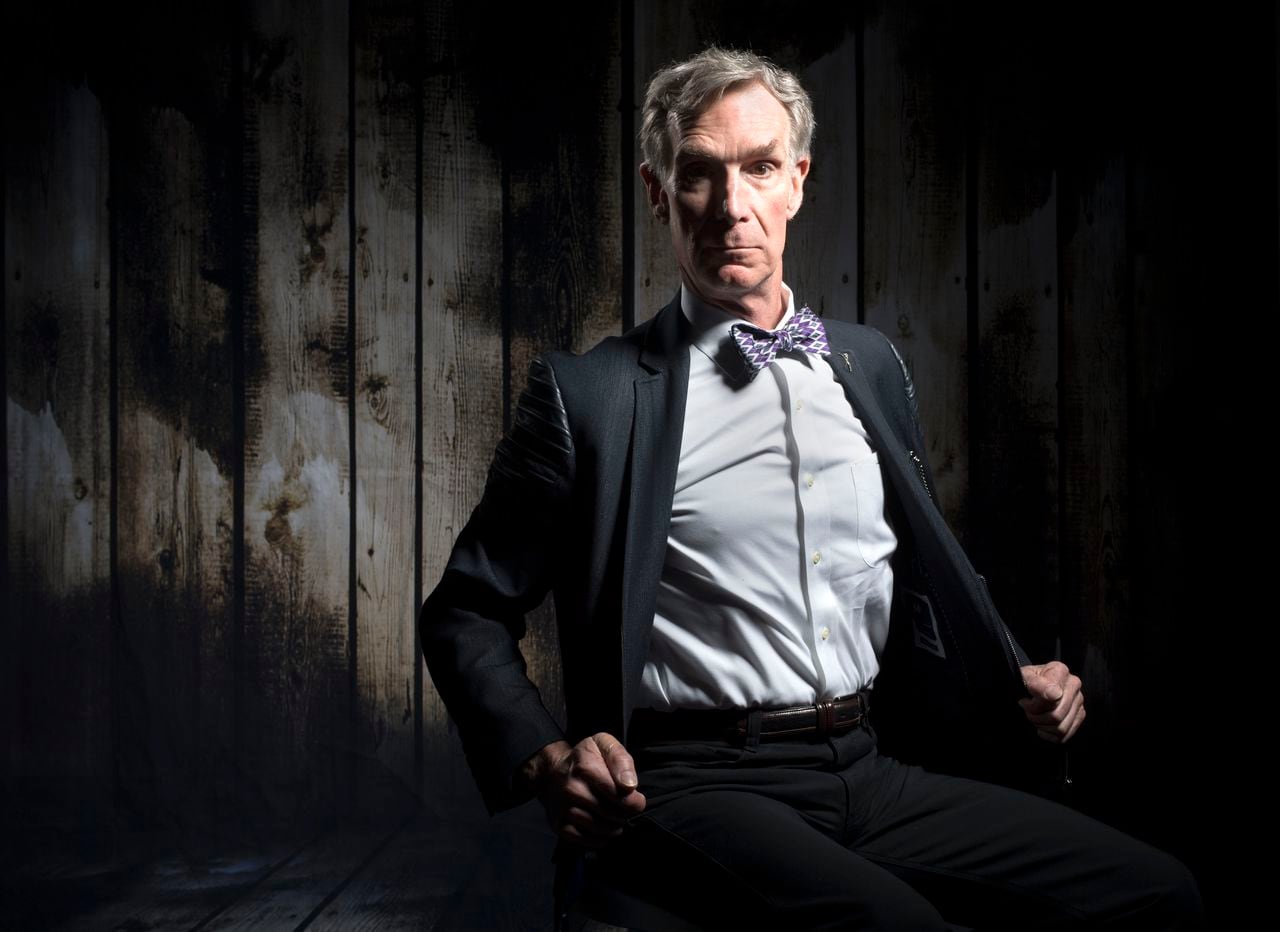Itâs Bill Nyeâs birthday. Letâs celebrate his simple climate change explanations
Bill Nye has been the mainstay of widespread, reliable, easy-to-explain science for generations. He was catapulted to fame off the back of his popular science show, Bill Nye the Science Guy, gaining a sort of Mr. Rogers-level status as funny, affable and trustworthy.
The Washington D.C.-born Cornell graduate, who will be 68 on Monday, hosted his science show from 1993 to 1999, but never relinquished his role as the nation’s favorite pop-scientist. He started out as a Boeing engineer before quitting in 1986 to pursue his burgeoning stand-up career. But it wasn’t long before he was able to marry both his passions: science and entertainment.
In later years, he took off the science training wheels and publicly entered into the gritty and sordid world of climate science, often appearing on mainstream TV and even meeting presidents to discuss climate threats. He also had a Netflix show, Bill Nye Saves the World.
There’s no doubt that climate change is already a complicated subject, further muddled by the various oppositional political narratives and the science community’s difficulty in explaining some of the more paradoxical and counterintuitive ways the Earth’s climate systems interact.
Among them: why drought can make flash flooding more likely or why warmer weather can lead to increased snowfall in some regions. Bill Nye’s approach is even more straightforward, as he sticks to the basics.
Here are some of his simple explanations that should help you decode the confusing world of climate change.
Climate change refers to the rapid increase in Earth’s temperature, primarily attributed to human activities since the Industrial Revolution. In the last century, the Earth has warmed by 1.2 to 1.4 degrees Fahrenheit, with significant changes not due to natural Earth’s orbit variations but to human-induced factors. This includes increased greenhouse gas emissions from burning fossil fuels, leading to trapped solar radiation and a warmer planet.
2. Why are oceans most at risk?
Climate change’s profound impact on oceans includes warming temperatures, which have risen by over 23 degrees Fahrenheit since 1969. This warming leads to ocean acidification, with a 30% increase in surface acidification since the late 18th century, endangering marine life like oysters, clams, and corals. Over 1 billion people rely on the sea to find their primary source of protein. Additionally, climate change contributes to rising sea levels, which have increased by 6.7 inches in the last century but doubled over the last decade due to melting glaciers and ice sheets. This results in coastal flooding and disruptions to ecosystems and human settlements.
3. What does melting ice do?
Since 1994, each year, on average, the Earth has lost 400 billion tons from its glaciers. That is the equivalent of an ice cube four miles on every side melting and flowing into the sea. When that ice melts, just like a bathtub, the shores can’t hold all that water and it overflows. 4.
4. How to stop global warming?
Key actions include reducing carbon monoxide and methane emissions, primarily achieved by ceasing to burn fossil fuels. He advocates for transitioning to alternative energy sources like wind, solar, geothermal, and potentially nuclear fusion in the future. These sources would provide ample electricity globally, allowing us to remove carbon dioxide from the atmosphere eventually. He urges immediate action to begin this crucial process.
While he does believe humans can make some changes through individual actions, he says voting for politicians who believe in climate change is the fastest and most effective way to make a change.
5. How does climate change affect humans and animals?
Climate change has led to water restrictions in regions like California due to reduced mountain snowfall, which traditionally served as natural water storage. This decrease in available water affects agriculture, leading to potential food shortages and higher prices, disproportionately impacting poorer communities.
For animals, climate change is altering their habitats and behaviors. Notably, insects, like certain beetles, thrive in warmer temperatures, causing widespread tree death. This, in turn, exacerbates forest fires fueled by dead trees and milder winters. These fires release more carbon dioxide, exacerbating climate change and destroying ecosystems and wildlife, creating a vicious cycle of environmental damage.
